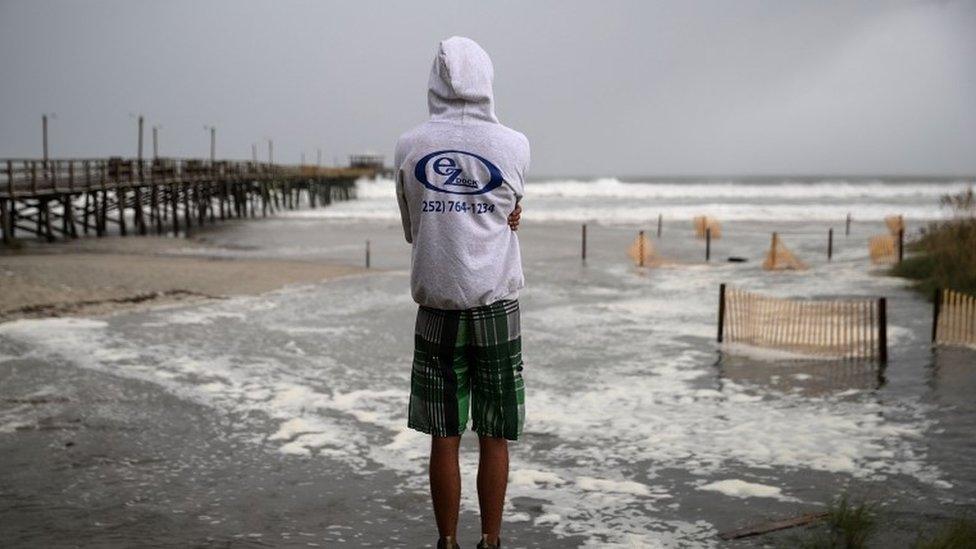Storm Florence: Warnings of 'catastrophic' flash flooding
- Published
Gusts & floods: the impact of the storm
Weather forecasters warn of the risk of life-threatening flash flooding in parts of North and South Carolina, and Virginia, from storm Florence.
It has been downgraded from a hurricane to a tropical storm but continues to soak the East Coast area with rain, downing trees and damaging homes.
It is slowly grinding over the eastern states, with winds of 65mph (105km/h).
Five deaths have been linked to the storm and thousands of people have been staying in emergency shelters.
Evacuation warnings were issued for 1.7 million people in the region.
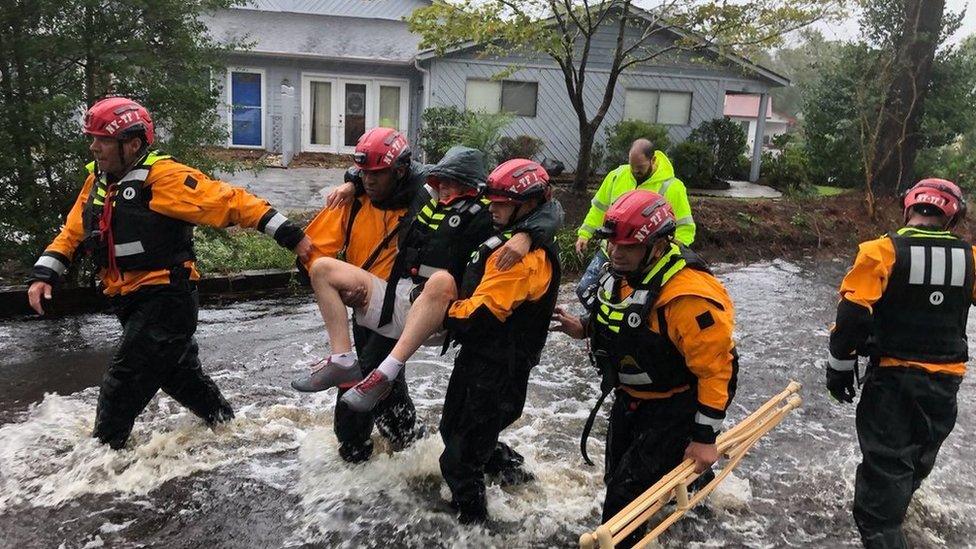
Rescue workers from other parts of the country, including this crew from New York, have been helping in the Carolinas
All five deaths linked to the storm are in North Carolina:
A mother and her infant were killed in Wilmington when a tree fell on their home on Friday. Officials say the child's father was also transported to hospital for injuries
Two men in their 70s were killed in Lenoir County. One was killed when connecting an electrical generator, and family members say another man was killed in a wind-related death when checking on dogs outside his property
A woman died from cardiac arrest in the town of Hampstead after emergency responders had their route to her blocked by downed trees, a county official said
What is the latest on the storm?
The storm originally made landfall at Wrightsville Beach, North Carolina, on Friday morning as a category one hurricane.
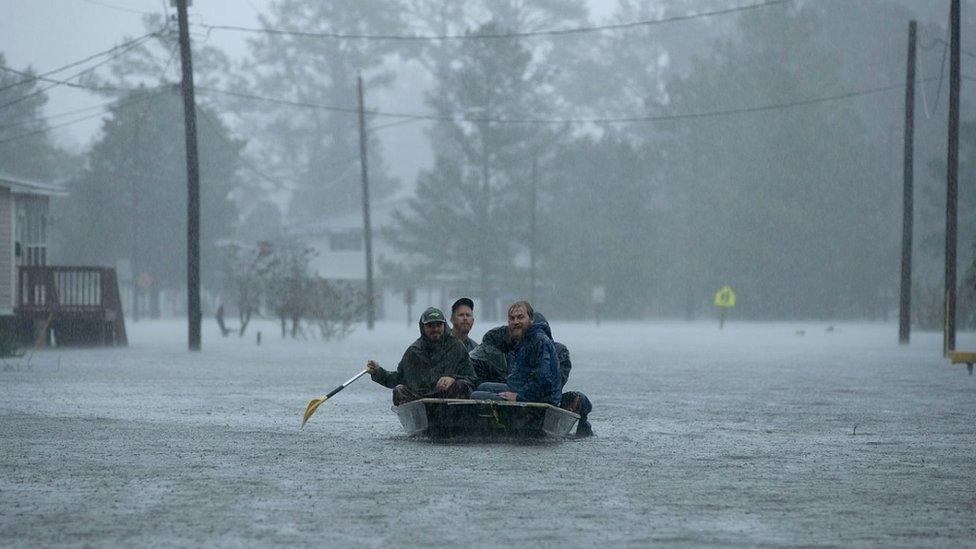
Volunteers are helping to rescue residents from flooded homes
"Catastrophic fresh water flooding" is expected in parts of both the Carolinas, external, the National Hurricane Center said late on Friday local time.
Some parts of North Carolina have already seen surges as high as 10ft in places.
North Carolina Governor Roy Cooper said the hurricane was likely to "continue its violent grind for days" and described the severity of the downfalls as a "1,000 year event".
The Weather Channel uses virtual reality to show deadly storm surge
Florence is expected to dump 18 trillion gallons of rainwater on US soil, meteorologist Ryan Maue tweeted, external.
Almost 800,000 people are reported to be without power already in North Carolina, and officials have warned restoring electricity could take days or even weeks.
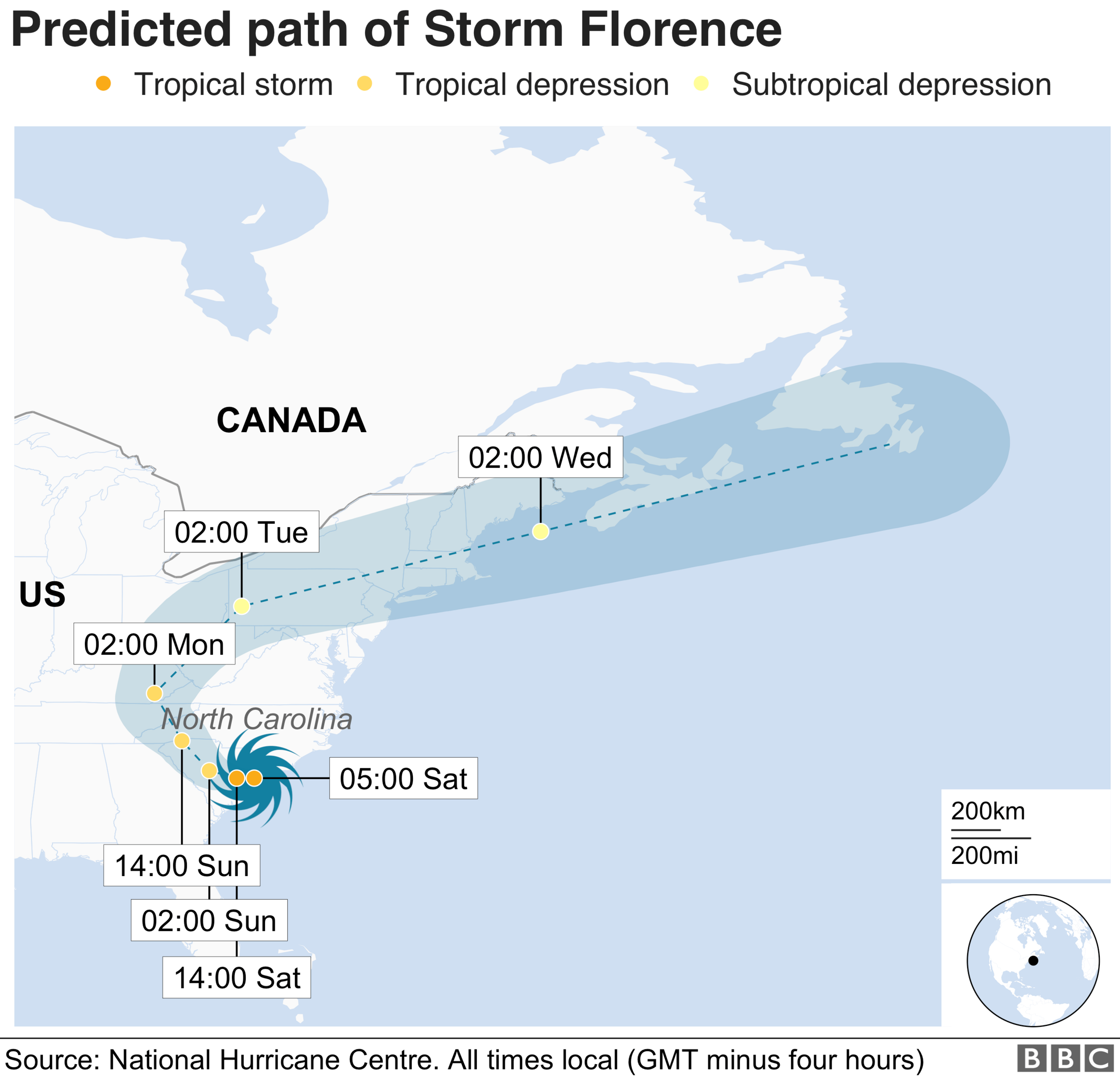

How are residents coping?
More than 20,000 residents have packed into North Carolina emergency shelters, and officials have told those still in the storm's path to stay in place.
In Jacksonville, North Carolina, officials had rescued more than 60 people overnight on Thursday from a hotel that was collapsing in the storm.
Parts of New Bern, North Carolina, which is home to 30,000 people, were 10ft underwater on Friday after local rivers flooded their banks.
Scores of residents in the riverfront city were plucked to safety, local reports say.

The Cajun Navy, a volunteer rescue group, were among those travelling by boat around the town to help people who were trapped.
Officials have warned residents against entering attics, so as to avoid drowning, unless they have a means to cut through to the roof.
The White House said on Friday that President Donald Trump would travel to the region next week unless his trip would disrupt clean-up and rescue efforts.

Is global warming to blame?
The relationship between climate change and hurricanes is a complex one.
Warmer seas power hurricanes. So as the temperature of ocean water goes up, we might expect the intensity of hurricanes to increase in future.
A hotter atmosphere can also hold more water, so this should allow hurricanes to dump more water on affected areas.
But there are so many factors that contribute to these rare events, it has been difficult to tease out clear trends from the data.
- Published13 September 2018
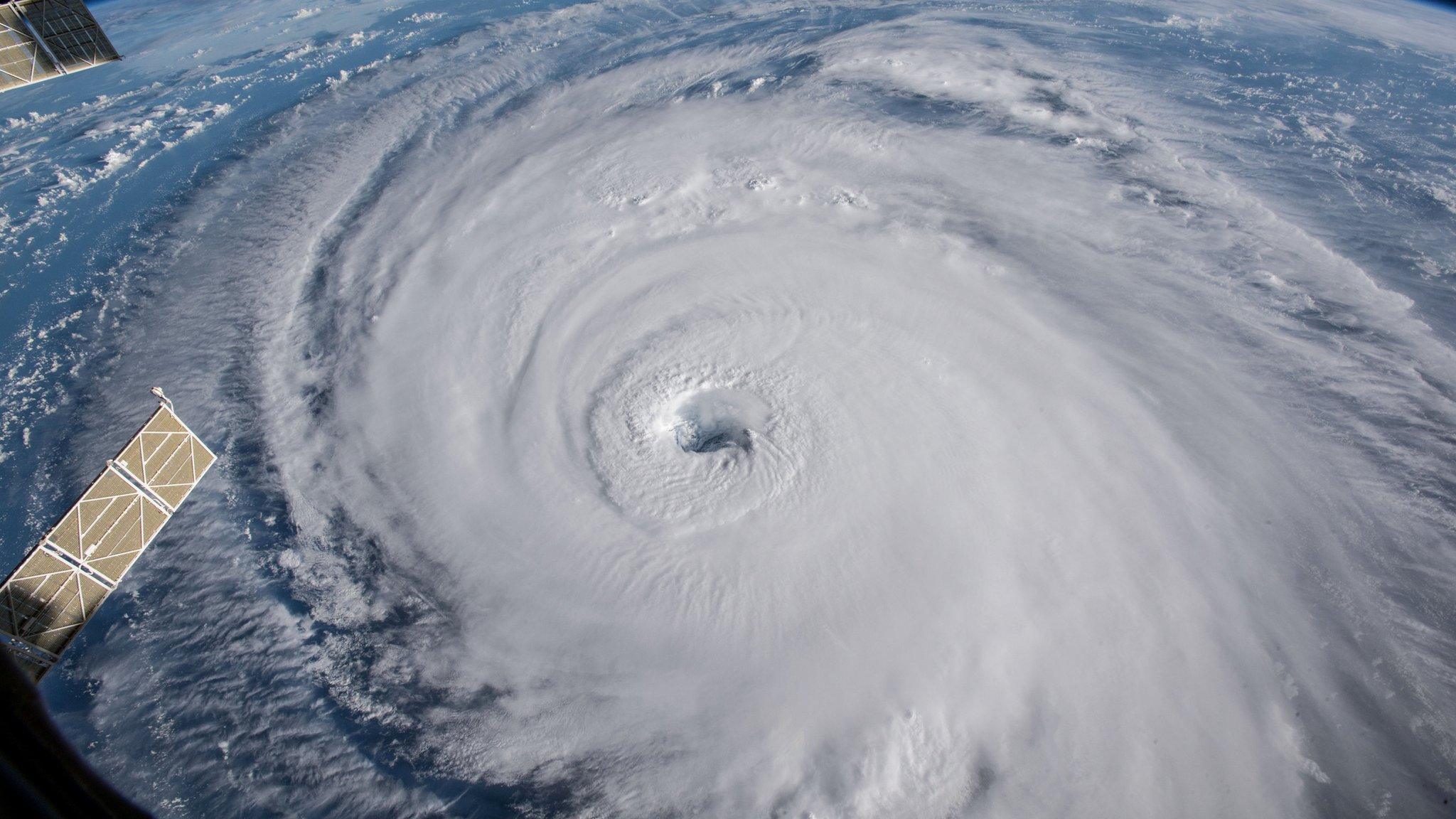
- Published12 September 2018
